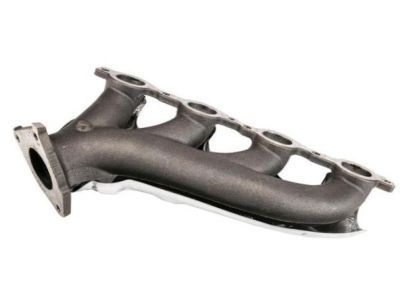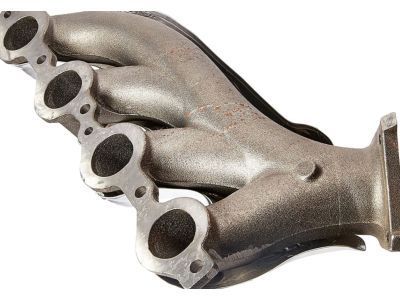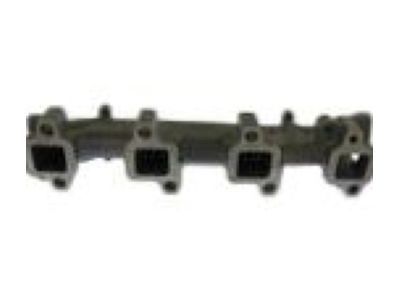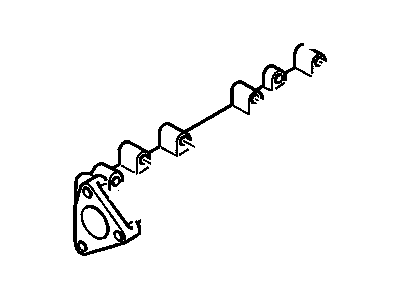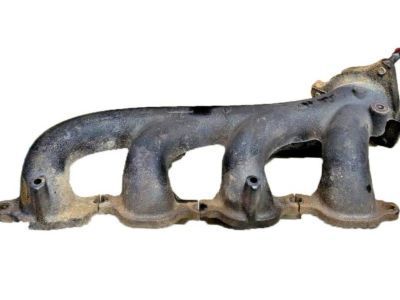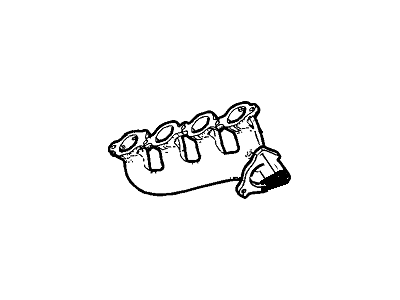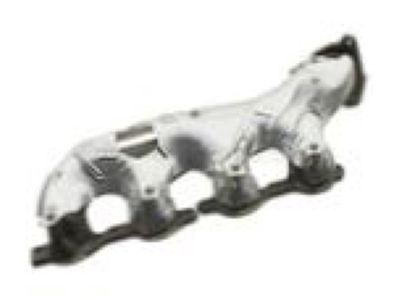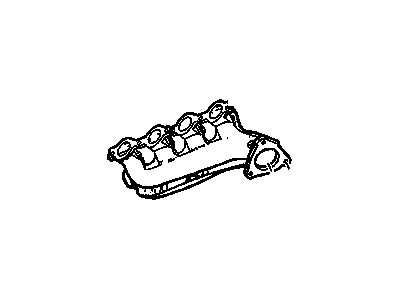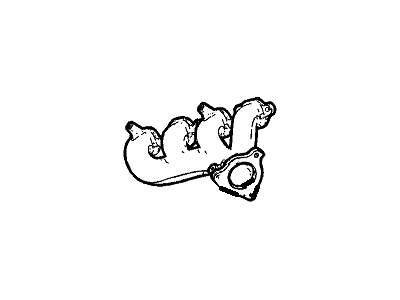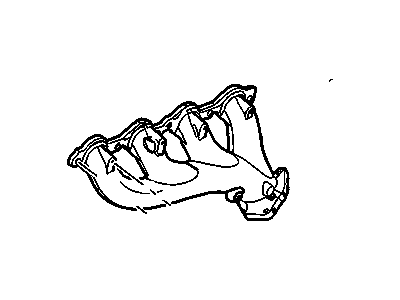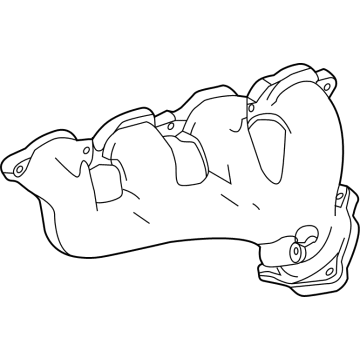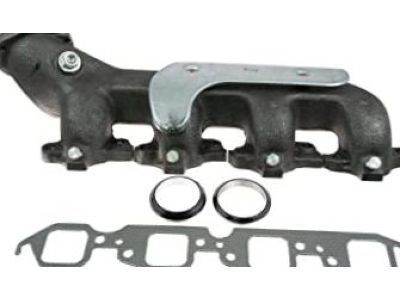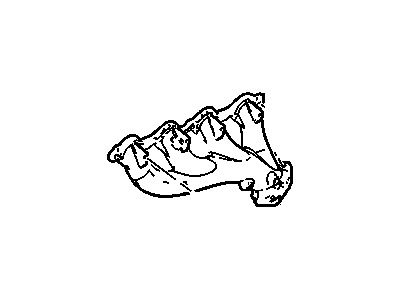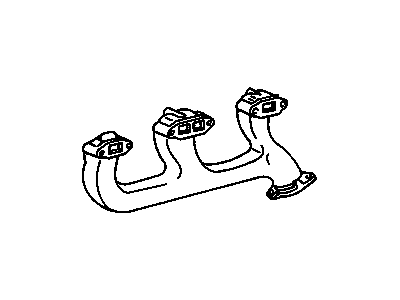
My Garage
My Account
Cart
Genuine GMC Yukon Exhaust Manifold
Engine Exhaust Manifold- Select Vehicle by Model
- Select Vehicle by VIN
Select Vehicle by Model
orMake
Model
Year
Select Vehicle by VIN
For the most accurate results, select vehicle by your VIN (Vehicle Identification Number).
36 Exhaust Manifolds found
GMC Yukon Engine Exhaust Manifold
Part Number: 12616286$205.82 MSRP: $351.92You Save: $146.10 (42%)Ships in 1-2 Business DaysGMC Yukon Exhaust Manifold
Part Number: 12629337$156.98 MSRP: $268.42You Save: $111.44 (42%)Ships in 1-2 Business DaysGMC Yukon Exhaust Manifold Assembly
Part Number: 12677665$227.59 MSRP: $362.98You Save: $135.39 (38%)Ships in 1-2 Business DaysGMC Yukon Exhaust Manifold Assembly
Part Number: 12686303$427.26 MSRP: $737.06You Save: $309.80 (43%)Ships in 1-2 Business DaysGMC Yukon Manifold Assembly, Exh
Part Number: 55513001$117.36 MSRP: $176.03You Save: $58.67 (34%)Ships in 1-3 Business DaysGMC Yukon Engine Exhaust Manifold
Part Number: 12557359$131.19 MSRP: $195.61You Save: $64.42 (33%)Ships in 1-2 Business DaysGMC Yukon MANIFOLD-EXH
Part Number: 12713621$236.28 MSRP: $376.77You Save: $140.49 (38%)Ships in 1-3 Business DaysGMC Yukon Manifold, Exh
Part Number: 12701715$260.19 MSRP: $394.23You Save: $134.04 (34%)Ships in 1-3 Business Days
| Page 1 of 2 |Next >
1-20 of 36 Results
GMC Yukon Exhaust Manifold
The Exhaust Manifold of GMC Yukon vehicles is a very important part of the exhaust system that travels from the engine with help of tubes carrying hot gaseous products of combustion. It also protects the engine from having its intake reversion and it also maintains desirable air to fuel mix. The manifold can be either made from cast iron or stainless steel with headers being available in the market for increased efficiency of the engine. Various kinds of exhaust manifolds, including headers, increase the velocity of exhaust gases and, therefore, the performance of an engine. Further increasingly, refinements such as the coatings of ceramics in the engine bay or wrapping of exhaust will assist in reducing the heat but result in the shrinking of the manifold. In conclusion, the role of Exhaust Manifold is very significant in this context in enhancement of the total engine performance and safety of the drivers and passengers to prevent from the hazardous fumes emitting through exhaust pipe.
Each OEM GMC Yukon Exhaust Manifold we offer is competitively priced and comes with the assurance of the manufacturer's warranty for the part. Furthermore, we guarantee the speedy delivery of your orders right to your doorstep. Our hassle-free return policy is also in place for your peace of mind.
GMC Yukon Exhaust Manifold Parts Questions & Experts Answers
- Q: How to remove and reinstall exhaust manifolds on 4.3L V6 engine on GMC Yukon?A:Disconnect the cable from the negative terminal of the battery. Raise the vehicle and support it securely on jackstands. Working under the vehicle, apply penetrating oil to the exhaust pipe-to-manifold studs and nuts, which are usually rusty. Remove the nuts retaining the exhaust pipe(s) to the manifold(s). Disconnect the spark plug wires, remove them from their retainers and lay them out of the way. Remove the exhaust manifold fasteners. Remove the manifolds along with the heat shields and discard the gaskets. The heat shields can be removed at this time. Check the manifold for cracks and ensure the bolt threads are clean and undamaged. The manifold and cylinder head mating surfaces must be clean before the manifolds are reinstalled-use a gasket scraper to remove all carbon deposits. Position the manifold on a bench and install the heat shields, bolts, and gaskets onto the manifold. Retaining tabs surrounding the gasket bolt holes will hold the assembly together as the manifold is installed. Place the manifold on the cylinder head and install the mounting bolts finger-tight. When tightening the mounting bolts, work from the center to the ends, and use a torque wrench. Tighten the bolts in two steps to the torque specifications. If equipped, bend the locking tabs back against the bolt heads. The remainder of installation is the reverse of removal. Start the engine and check for exhaust leaks.
- Q: How to remove and reinstall an exhaust manifold on V8 engine on GMC Yukon?A:Disconnect the cable from the negative terminal of the battery. Raise the vehicle and support it securely on jackstands. Working under the vehicle, apply penetrating oil to the exhaust pipe-to-manifold studs and nuts (they're usually rusty). Remove the inner fender splash shield. Disconnect the exhaust pipe/catalytic converter pipe from the exhaust manifold. Remove the spark plug wires. Use a dab of paint to mark the alignment of the upper section of the steering intermediate shaft to the lower part of the steering column. Remove the fasteners, then separate the shafts so they can be moved aside. Remove the oil dipstick tube. If a new manifold is to be installed, remove the heat shield. Remove the manifold mounting bolts, then lift off the exhaust manifold and its gasket. Check the manifold for cracks and make sure the bolt threads are clean and undamaged. The manifold and Cylinder Head mating surfaces must be clean before the manifolds are reinstalled-use a gasket scraper to remove all carbon deposits and gasket material. Install the heat shields, then install the bolts and gaskets onto the manifold. Retaining tabs surrounding the gasket bolt holes should hold the assembly together as the manifold is installed. Starting at the fourth thread, apply a 1/4-inch wide band of medium-strength thread-locking compound to the threads of the bolts. Place the manifold on the cylinder head and install the mounting bolts finger-tight. When tightening the mounting bolts, work from the center to the ends. Tighten the bolts in two steps to the proper torque specifications. If required, bend the exposed end of the exhaust manifold gasket back against the cylinder head. The remainder of installation is the reverse of removal. Start the engine and check for exhaust leaks.
Related GMC Yukon Parts
Browse by Year
2024 Exhaust Manifold 2023 Exhaust Manifold 2022 Exhaust Manifold 2021 Exhaust Manifold 2020 Exhaust Manifold 2019 Exhaust Manifold 2018 Exhaust Manifold 2017 Exhaust Manifold 2016 Exhaust Manifold 2015 Exhaust Manifold 2014 Exhaust Manifold 2013 Exhaust Manifold 2012 Exhaust Manifold 2011 Exhaust Manifold 2010 Exhaust Manifold 2009 Exhaust Manifold 2008 Exhaust Manifold 2007 Exhaust Manifold 2006 Exhaust Manifold 2005 Exhaust Manifold 2004 Exhaust Manifold 2003 Exhaust Manifold 2002 Exhaust Manifold 2001 Exhaust Manifold 2000 Exhaust Manifold 1999 Exhaust Manifold 1998 Exhaust Manifold 1997 Exhaust Manifold 1996 Exhaust Manifold 1995 Exhaust Manifold 1994 Exhaust Manifold 1993 Exhaust Manifold 1992 Exhaust Manifold


